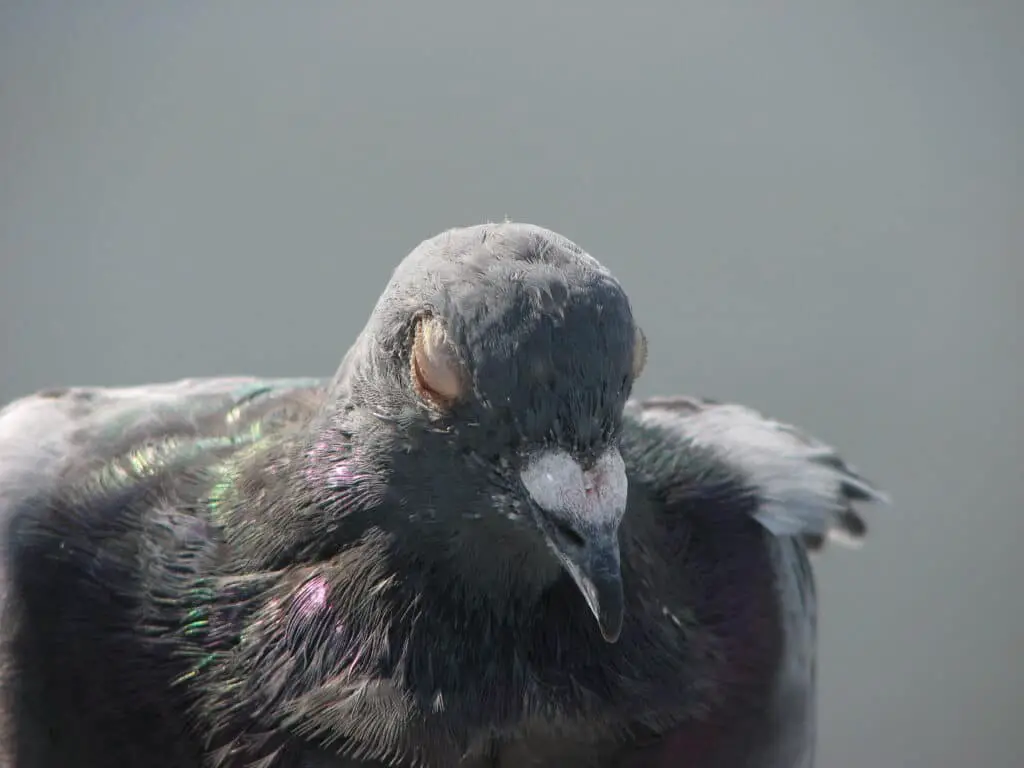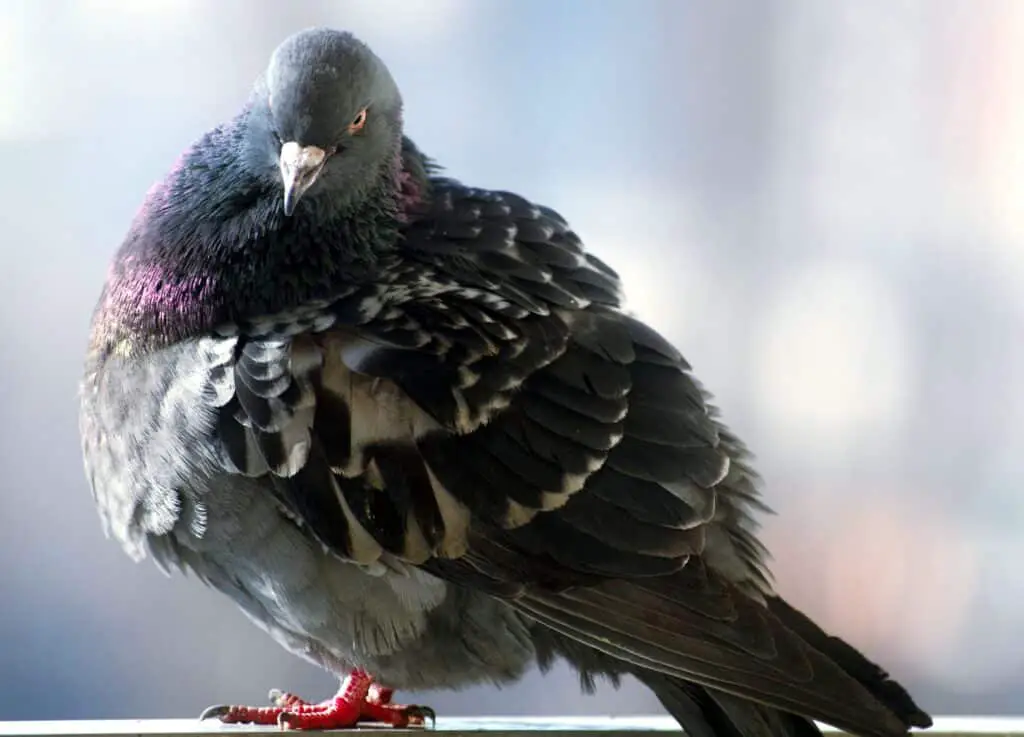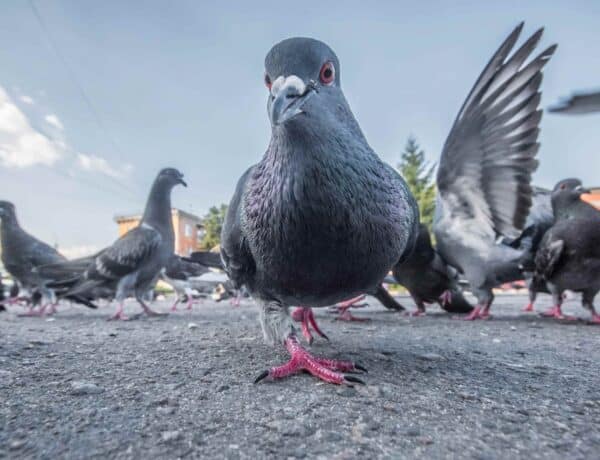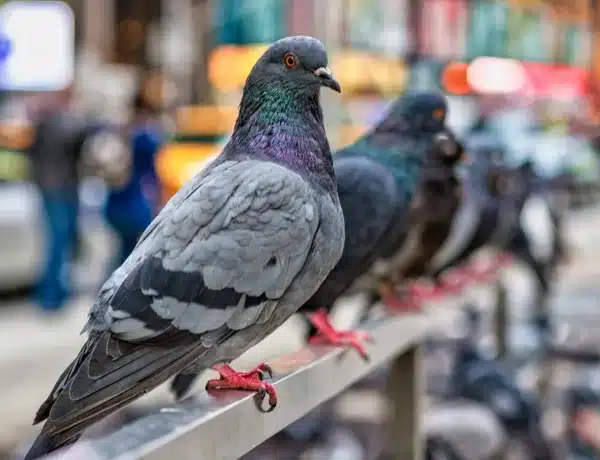Introduction
Where Do Pigeons Sleep: The urban landscape is a bustling and vibrant environment, teeming with life and activity during the day. People rush to work, cars navigate through the streets, and the city seems to hum with energy. However, as the sun sets and the city’s lights begin to twinkle, a remarkable transformation takes place. Pigeons, those ubiquitous and often overlooked denizens of our cities, have long been a part of the urban ecosystem. They have adapted seamlessly to the concrete jungle, finding sustenance in the crumbs of human existence and making homes on the ledges and rooftops of our buildings. While pigeons are a common sight during the day, their nocturnal habits are shrouded in mystery for many.
In this exploration, we will delve into the intriguing world of pigeon roosting and nocturnal habits. We will uncover the hidden corners of the city where pigeon stretch seek shelter and rest as darkness falls. From the towering skyscrapers to the quaint corners of parks, pigeons have devised ingenious ways to ensure their safety and comfort during the night. To truly understand where pigeons sleep, we must also unravel the remarkable adaptability and survival skills that have allowed them to thrive in our urban environments.
Pigeons are not just idle cohabitants of our cities they are a testament to nature’s ability to find a place even in the most unexpected of settings. As we embark on this journey to uncover the secrets of where pigeons sleep, we will gain a deeper appreciation for these feathered residents of our urban jungles. It is a journey that will shed light on the intricacies of avian life in our midst and reveal the extraordinary ways in which pigeons have carved out their niche in the urban tapestry. So, let us embark on this nocturnal adventure to discover the hidden world of pigeons when the city’s bustling streets give way to the hush of night.

Where do pigeons go at night to sleep?
Because pigeons don’t sleep in their nests, they need to find other locations to spend the night and get some rest. Pigeons look for shelters that will keep them warm throughout the night while also protecting them from predators. They often find this shelter on roofs of homes and other buildings.
Pigeons are incredibly adaptable creatures, and they’ve found unique ways to make use of the urban environment for shelter. Many pigeons choose to roost in the man-made structures of cities. One of their favorite nighttime abodes is the ledges of buildings. These narrow architectural features protection from the elements and a measure of safety from ground-based predators.
Rooftops offer pigeons another safe haven for nighttime rest. They can be found perched on the edges of buildings, often huddled together for warmth. The height an added layer of security, reducing the risk of nocturnal predators such as raccoons or feral cats.
Abandoned buildings with broken windows and crumbling facades an ideal hideaway for pigeons. These structures offer seclusion and shelter from the elements. Pigeons can access these spots through openings and crevices, making them well-suited for overnight stays.
In more natural or park-like urban settings, pigeons may opt to sleep in trees or within the architectural features of parks, such as gazebos or bridges. Here, they can maintain a semblance of the roosting behavior of their wild ancestors while still being in the heart of the city.
How long do pigeons sleep at night?
La Trobe University sleep expert Dr. John Lesku said that while magpie sleep is more disrupted under white light compared to amber light, both types of light are equally disruptive for sleep in pigeons. “Both magpies and pigeons average 10 hours of sleep per night.
Pigeons are Diurnal Birds: Pigeons are primarily diurnal birds, which means they are most active during the day. They spend their daylight hours foraging for food, engaging in social interactions, and engaging in other activities crucial for their survival. These activities vary depending on their environment but often include scavenging for seeds, grains, and other edible items in urban settings.
Nighttime Rest: Like many diurnal animals, pigeons need rest at night to recharge for the following day. However, the sleep patterns of pigeons are quite different from those of humans. Pigeons are known for having a unique sleep-wake pattern characterized by short periods of sleep throughout the day and night, rather than a single extended bout of sleep at night.
Short Naps: Pigeons engage in short naps, often lasting only a few minutes, throughout their 24-hour cycle. These brief periods of sleep are known as microsleeps. Pigeons can have these microsleeps both during the day and at night. These short naps allow them to remain vigilant against potential threats, such as predators, even while they rest.
Nighttime Roosting: While pigeons do sleep at night, they also engage in nighttime activities like seeking shelter and roosting. As mentioned earlier, they often choose ledges, rooftops, and other elevated spots for resting. These roosting sites protection from ground-based predators like cats and raccoons.
At what time do pigeons sleep?
Like all living creatures, pigeons sleep. they sleep on a ledge, or if they are nesting, on their nest. they lay down on their underside, lid a resting chicken and snuggle in shut their eyes and sleep. They tend to sleep from dusk to dawn, waking up ready to roll when the sun rises and it’s ligh floods their vision.
Pigeons Are Diurnal: Pigeons are primarily diurnal birds, which means they are most active during the day. They are often seen foraging for food, socializing, and engaging in various activities during daylight hours. As diurnal animals, they are adapted to the natural light-dark cycle of the day.
Short Naps Throughout the Day: Pigeons have a unique sleep pattern characterized by frequent, short naps, often referred to as “microsleeps.” These naps can occur both during the day and at night. The duration of each nap is typically just a few minutes. These short naps allow pigeons to rest and conserve energy while remaining alert to potential threats.
Nighttime Roosting: While pigeons do not have a specific bedtime, they do seek shelter and engage in nighttime roosting activities. As night falls, they often choose elevated spots like building ledges, rooftops, or trees to rest. These roosting sites protection from ground-based predators and offer some insulation from the cold.
Variable Sleep Duration: The duration of nighttime rest can vary among individual pigeons and is influenced by various factors. Environmental conditions, such as temperature and weather, can impact how long pigeons rest. Additionally, safety concerns and the availability of food sources may influence when and how long pigeons rest at night.
Are pigeons smart?
Pigeons are incredibly complex and intelligent animals. They are one of only a small number of species to pass the ‘mirror test’ – a test of self recognition. They can also recognise each letter of the human alphabet, differentiate between photographs, and even distinguish different humans within a photograph.
Memory: Pigeons possess excellent memory skills. They can landmarks, locations of food sources, and even specific individuals who have fed them. This ability to and recognize patterns in their environment is crucial for their survival.
Spatial Intelligence: Pigeons have a remarkable sense of direction and are known for their homing ability. They can navigate over long distances and return to their home loft with impressive accuracy. This talent has been harnessed by humans for centuries in messenger pigeon and racing pigeon roles.
Problem Solving: Pigeons have shown problem-solving abilities in various laboratory experiments. They can learn to associate certain actions with rewards and adapt their behavior accordingly. This is a sign of their capacity to learn and apply knowledge.
Numerical Skills: Recent studies have suggested that pigeons may possess rudimentary numerical skills. They can discriminate between different quantities, understand basic concepts of and subtraction, and even grasp concepts related to probability.
Do pigeons eat rice?
Pigeons will eat almost anything, including rice. I don’t think rice (especially white rice) is especially nutritious as a bird food, but if the pigeons also eat a variety of other foods, they should be fine.
Pigeons, like many other birds, can indeed eat rice. In their natural habitat, pigeons are opportunistic feeders, and their diet includes a wide variety of grains, seeds, fruits, and even small insects. Rice, being a grain, is a food source that pigeons can consume and digest without any problems.
One point of concern has been the belief that uncooked rice can expand in a bird’s stomach, potentially causing harm. However, this notion is largely a myth. Rice, whether cooked or uncooked, does not swell or expand significantly in a bird’s stomach. Pigeons, like other birds, have a digestive system that is well-equipped to handle grains and seeds.
While pigeons can eat rice, it’s essential to them with a balanced diet. Pigeons, like all animals, benefit from a diverse range of foods. Feeding pigeons exclusively on rice or any single type of food is not. A varied diet ensures they receive all the necessary nutrients for their health and well-being.
Do pigeons sleep in the rain?
Large birds that live out in the open, such as gulls, hawks, pigeons or herons, usually just sit still and wait out a heavy rain. Small songbirds living in trees and shrubs may seek sheltered spots under overhanging branches or leaning trunks. Birds around towns and farms may take shelter in porches or sheds.
In general, pigeons prefer to seek shelter during heavy rain or adverse weather conditions. While pigeons are hardy birds and can tolerate mild rain to some extent, they are not immune to the discomfort of wet feathers and cold temperatures. To avoid getting soaked and chilled, pigeons often seek refuge in covered areas.
Pigeons typically choose roosting sites that some degree of shelter, such as ledges on buildings or trees with dense foliage. These spots offer protection not only from predators but also from the rain. Pigeons often huddle together on these roosts during rain showers to share body heat and reduce exposure to the elements.
There may be instances when pigeons get caught in the rain, especially during sudden and unexpected downpours. In such cases, pigeons may attempt to find a nearby shelter, such as under building eaves or overhangs, to wait out the rain. They may also perch on branches or utility wires, trying to minimize their exposure to raindrops.
Do pigeons carry diseases?
Diseases associated with pigeon droppings include Cryptococcosis, Histoplasmosis and Psittacosis. You can become infected with these diseases by breathing in the dust that is created when cleaning droppings. The risk of pigeon-related diseases is rare.
Histoplasmosis: Pigeon droppings can harbor the fungus Histoplasma capsulatum, which can cause a respiratory illness called histoplasmosis in humans when spores become airborne. This disease is relatively rare and usually affects people with weakened immune systems.
Cryptococcosis: Another fungus, Cryptococcus neoformans, found in pigeon droppings, can cause cryptococcosis in humans, primarily affecting those with compromised immune systems. Healthy individuals are less likely to become infected.
Salmonella: Pigeons, like many birds, can carry Salmonella bacteria in their feces. Ingesting food or water contaminated with pigeon droppings can lead to a Salmonella infection. Proper food handling and hygiene practices can minimize this risk.
Ectoparasites: Pigeons can host various external parasites like mites, ticks, and fleas, which could potentially bite humans. However, these parasites usually prefer bird hosts over humans and are not common vectors of disease transmission to people.
Can pigeons sleep in light?
In the wild, birds might choose to avoid sleeping under lights, but some wild pigeons and magpies have been found to sleep in conditions like those in the study, says Farley Connelly at the University of Melbourne and La Trobe University, Australia, who co-authored the study.
Pigeons are primarily diurnal birds, which means they are most active during the daytime. In their natural habitat, they forage for food, engage in social interactions, and perform various activities during daylight hours. Their visual acuity is adapted to daytime vision, allowing them to navigate and find food efficiently.
While pigeons are diurnal by nature, they are also capable of adjusting their activity patterns to some extent in response to environmental factors. For example, in urban environments where artificial lighting is prevalent at night, pigeons may become more active during the early morning or evening hours when there is less illumination.
Pigeons, like many birds, tend to seek out safe and comfortable roosting sites for resting and sleeping. They prioritize sheltered areas that protect them from predators, adverse weather, and disturbances. In urban settings, pigeons often choose roosting spots on buildings, ledges, and other structures where they can perch safely.
Pigeons often roost in groups, and communal roosts are common. Roosting together offers safety, as multiple pairs of eyes can watch for predators. Pigeons may also adjust their behavior to sleep in shifts, with some individuals staying alert while others rest.

Conclusion
In the realm of urban wildlife, pigeons often occupy a place both familiar and enigmatic. While their presence during daylight hours is a common sight, our curiosity about where they sleep has illuminated a fascinating facet of their existence. Pigeons, it turns out, are masterful at finding ingenious solutions for sheltering themselves during the night. From the ledges of skyscrapers to the nooks and crannies of abandoned buildings, these birds have become urban architects in their own right. Rooftops have become their sanctuaries, offering a safe haven from predators and the elements.
But their choice of pigeon night nocturnal roosts isn’t just a matter of convenience. Pigeons, as it turns out, are highly social creatures. They seek out communal roosting sites where they can huddle together for warmth and protection. These sites serve as not only a place to rest but also as hubs for social interaction, where pigeons can reinforce their social bonds through grooming and cooing. The adaptability of pigeons is a testament to nature’s remarkable ability to find a niche even in the most human-altered landscapes.
Their resilience in the face of urban challenges, scarce food sources, air pollution, and the ever-present threat of predation showcases the incredible capacity of wildlife to adapt and thrive in our cities. As the nocturnal world of pigeons, we gain a newfound appreciation for these feathered residents of our urban environments. They are not mere nuisances or overlooked background elements of the cityscape; they are survivors and pioneers. Pigeons remind us that nature’s beauty and tenacity can be found in unexpected places, even among the concrete and steel of our cities.





No Comments